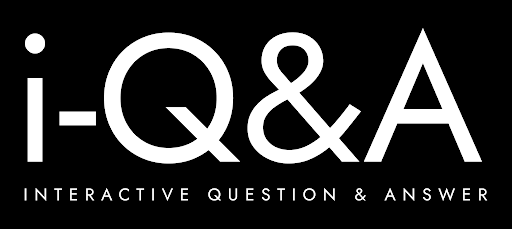
An FAQ page is often overlooked, tucked away at the bottom of a website like digital fine print. But here’s the question: is your FAQ section doing anything useful—or is it just there for show?
Done well, a Frequently Asked Questions page is far more than a box-ticking exercise. It’s a self-service support tool, a trust-builder, and an SEO opportunity rolled into one. For customers, it offers quick answers; for businesses, it saves time and reduces repetitive queries. But crafting an effective one? That takes more than a copy-paste list of questions and links.
At I-Q&A, we believe in FAQs that work hard for you. Here’s how to write an FAQ page that genuinely supports your visitors, reflects your brand voice, and becomes a helpful extension of your website—not an afterthought.
What Is an FAQ Page—and Why Does It Matter?
A Frequently Asked Questions page is a simple but powerful tool. It’s where common customer queries are answered clearly and efficiently. Whether it’s about delivery timelines, refund policies, or how your product works, a good FAQ prevents confusion and helps people get what they need without emailing or calling.
But that’s only scratching the surface. A strong FAQ page can:
- Reduce support requests
- Improve customer confidence
- Help finalise purchases
- Serve as 24/7 support
- Improve search engine visibility
It’s one of the few parts of your website that can answer real-world queries before a customer even clicks “contact”.
Start With Real Questions—Not What You Think People Ask
The best FAQs come from listening to your customers. Dig into your inbox, chat logs, social media messages, or support tickets. What are people asking again and again? Start there.
If you’re just launching or don’t have many customer queries yet, you can:
- Look at competitor FAQ pages
- Search Google autocomplete suggestions
- Check platforms like Quora or Reddit for relevant discussions
Also, consider adding broader questions that reflect your category rather than just your product. For example, if you sell reusable nappies, include something like, “How do I wash cloth nappies?” even if it’s not brand-specific. That makes your page helpful to more people—and brings in traffic through search.
Structure Matters: Make It Easy to Use
People come to FAQ pages because they want quick answers—not a scavenger hunt. Here’s how to make yours easy to navigate:
Use Clear Categories
Group your FAQs under obvious headings like:
- Shipping & Delivery
- Returns & Refunds
- Billing & Payments
- Product Help
- Account Management
This makes the page easier to scan and keeps users from bouncing.
Choose a Layout That Supports Scanning
Long lists are overwhelming. Depending on how many questions you have, consider:
- Accordion/dropdown menus to keep things tidy
- A search bar for large databases
- Sidebar filters for more advanced FAQ hubs
- Internal links to relevant blog posts or help articles
Visual simplicity goes a long way, especially on mobile.
Writing FAQ Content That Actually Helps
Here’s where many businesses go wrong: vague answers, jargon-filled explanations, or just linking to another page instead of answering the question directly. Here’s how to fix that.
1. Write Questions From the Customer’s Perspective
Don’t phrase things the way you talk. Phrase them how they would ask. For example:
- Better: “Can I track my order?”
- Weaker: “Do we offer tracking functionality?”
Using natural language improves clarity and helps your page show up in search results.
2. Use a Real Q&A Format
Avoid paragraphs of text that bury the question. Each entry should begin with the actual question and follow with a concise, well-structured answer. It’s easier to read and mirrors what people are used to seeing on search engines.
3. Keep Answers Short—but Not Vague
Aim for under 100 words per answer, where possible. But don’t sacrifice clarity. You don’t want people leaving with more questions than they came with.
Compare:
Q: What’s your return policy?
A: We accept returns within 30 days of purchase. Just email us your order number, and we’ll send a return label.
vs.
A: Our return policy can be found here. [link]
The first is far more helpful and saves your customer a click.
4. Start Yes/No Questions With a Yes or No
It seems obvious, but many businesses still miss this trick. Start with a clear answer:
Q: Do you ship internationally?
A: Yes. We currently ship to over 30 countries. See the full list here.
It’s reassuring, direct, and user-friendly.
5. Write With the Right Tone of Voice
Match your brand’s tone—whether you’re warm and conversational or clean and professional. But whatever your style, don’t fall into corporate speak. Use plain language and avoid jargon.
Instead of:
Q: Do you offer pre-approved redemption instruments?
Try:
Q: Do you sell gift cards?
Keep it simple. Speak human
Add Personality (Yes, Even Here)
Your FAQ doesn’t need to be clinical. A bit of warmth or humour goes a long way—as long as it’s still clear.
Q: What’s the animal in your logo?
A: That’s a narwhal! We chose it because they’re rare, smart, and swim their own way—just like us.
Moments like this give your brand personality and help you stand out.
Don’t Forget the Visuals
Not all questions are best answered with text. If you’re dealing with anything visual or technical—like setting up a product—consider:
- Short videos
- Step-by-step screenshots
- Simple diagrams
This can dramatically reduce user confusion and follow-up queries.
Keep It Updated—and Make It Easy to Reach Out
Your FAQ page should evolve alongside your business. Set a reminder every quarter to:
- Review outdated information
- Add new questions based on recent queries
- Test links and visuals
- Check that it works well on mobile
Also, include a fallback: if the answer isn’t there, make it easy for the customer to reach you. A small message like:
“Didn’t find what you were looking for? Contact us here.”
…can make a big difference.
Tools to Help Build a Better FAQ Page
Depending on your website builder, here are a few tools worth knowing about:
- Jimdo – Straightforward for small business sites
- Wix FAQ App – Stylish, with accordion and horizontal layouts
- HelpCrunch – Supports SEO-friendly formatting and design
- Document360 – Excellent for complex knowledge bases
- Zendesk – Ideal for customer service teams and help centres
Even if you don’t use a third-party tool, make sure your page is fast, accessible, and easy to navigate.
Final Thoughts
An FAQ page isn’t just a customer service tool—it’s part of your brand’s voice, your sales strategy, and your user experience. When it’s written thoughtfully, it provides answers people are actually searching for, builds trust with your audience, and helps your business run more smoothly.
If you’ve been treating your FAQ like a digital footnote, it might be time for a rethink.
Done properly, an FAQ isn’t just helpful—it’s part of what makes your site worth staying on.
Ready to write one that works? Start with real questions, give real answers, and keep it human.
